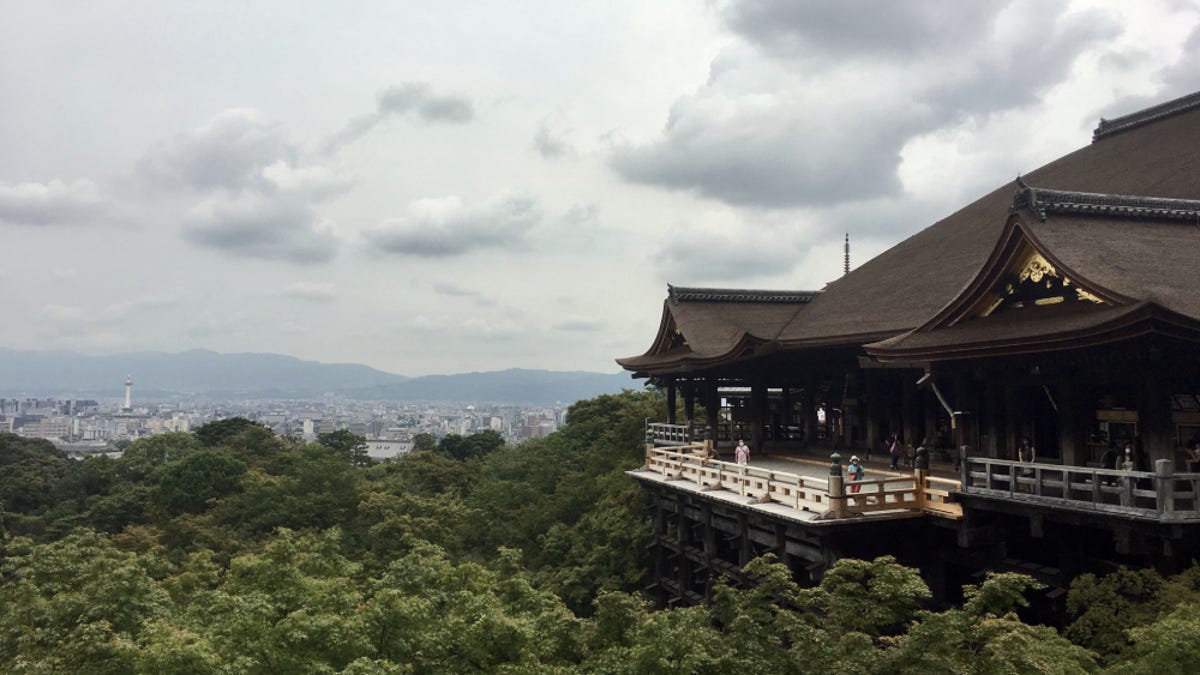This June, for the first time in a long time, I went to Kyoto with my kids to see the sights. But like everywhere, the city felt different. Something was missing.
It was summer. The kids needed something to do. Kyoto Prefecture is not far from where I live in Osaka. I can be there in 20 minutes by car. We masked up and planned to social distance and stay outside. But honestly, for a Saturday, in what would usually be some of the most crowded parts of the city, it often seemed like we were alone.
I remember walking around Kiyomizu-dera and Yasaka-no-to Pagoda and trying to explain to my two younger sons that it wasn’t usually like this. “It’s typically crowded with people,” I said.
Twenty years ago when I first arrived in Japan, Kyoto was overrun with tourists. Of course, it did have a tourist industry, but the city never felt like it was bursting at the seams like it had been until the pandemic started.
Recently on 2ch, photos were posted online showing just how empty Kyoto’s tourists spots can be during the pandemic. Below are some comments.
“It’s totally different without foreigners.”
“The bus wasn’t crowded which was nice.”
“This is what an economic collapse looks like.”
“I’m shocked that there’s nobody at the Arashiyama Bamboo Grove.”
“How are rental kimono places getting by?”
“I really want to visit in November, so keep things like this until then.”
“I live in Kyoto, and to be honest, right now is a good chance for sightseeing.”
Over the years, I’ve spent plenty of time in Kyoto, whether that’s been hanging out, visiting sake breweries, or for family reasons like gatherings, weddings, and funerals. But in the last decade, when tourism in Japan, especially to Kyoto, exploded, I found myself going to Kyoto less and less. Getting there is so easy, but driving through Kyoto City, pandemic or not, is always a pain. Then, there were the crowds. Goodness, were there the crowds. In 2019, Kyoto welcomed a record 87.9 million visitors. New, slick hotels sprung up across the city like mushrooms. There was an expectation that these big numbers would get even bigger. Then Covid-19 happen.
By April 2024, Kyoto city hotels were reporting a 99.7 percent downturn. The shift was to domestic tourism, but with Covid-19 flareups and repeated states of emergency, even those became hard.
Even without the influx of international visitors, there were flurries of tourist activities. While Kyoto city hotel reported an operating capacity of around 20 percent in July, Japanese tourists flocked to Kyoto’s Arashiyama during the fall, causing a 280.4 percent increase in visitors. Yet, the inevitable seemed to have: rising Covid-19 cases across the country and states of emergency declared.
G/O Media may get a commission
Spurred by a weak yen and a government eager for foreign cash flows, the Japanese tourist industry started to heat up about ten years ago. Many parts of Kyoto city are simply not designed for the number of visitors that were pouring into the city. When the pandemic hit, Japan closed its boarders to international travelers—as well as students and those with work visas trying to enter the country. Permanent residents were not permitted from leaving Japan initially, but that was changed.
And so has Kyoto. The core of Kyoto, its Kyotoness, remains. But walking around, with visitors prohibited from entering, was a different experience from how it’s been in the past few years.
Back in 2019, I wrote an article for Kotaku called “Tourists Are Causing Headaches In Japan” and another one titled “Tourists in Kyoto Are Making Geishas’ Lives Difficult.” Walking towards the Yasaka-no-to Pagoda this past June, I thought about both articles. They seemed like a million years ago.
I thought about the empty shops I passed. I imagined the disappointment of those who had just opened a profitable hotel, a bar, a restaurant, or another business only years before and were now struggling. I thought about people I knew in the hospitality industry and how things were for them. And I thought about the people who wanted to visit or enter the country for work or school, but couldn’t.
This wasn’t only happening here. It’s happening all over. Places around the world don’t look quite the same. I suddenly felt sad. Navigating the Kyoto sights on foot was easy, sure. Nobody got in my way, and photo opportunities were plentiful and picturesque. But goodness, it was lonely.
Kotaku
Source link
Related Post:
- Pokémon Go ends pandemic gameplay bonuses as COVID cases rise
- Elden Ring Gets New Info Section on Bandai Covering The Tarnished, Stealth and Gameplay Mechanics
- Assassin’s Creed Valhalla used in Irish tourism campaign • Eurogamer.net
- A-Train: All Aboard! Tourism update out now (version 1.1.1), patch notes
- Random: The Official Kirby Website Briefly Had A Kafka-esque Section
- The Quake remaster brings back a cut section of E2M6
- Play Together’s latest update introduce new travel and social features and much more | Articles
- Politician pushes for ban on India’s PUBG replacement
- Indonesia Minister calls for Fortnite ban over user-generated content
- Call of Duty Warzone Devs Ban Over 50,000 More Players
